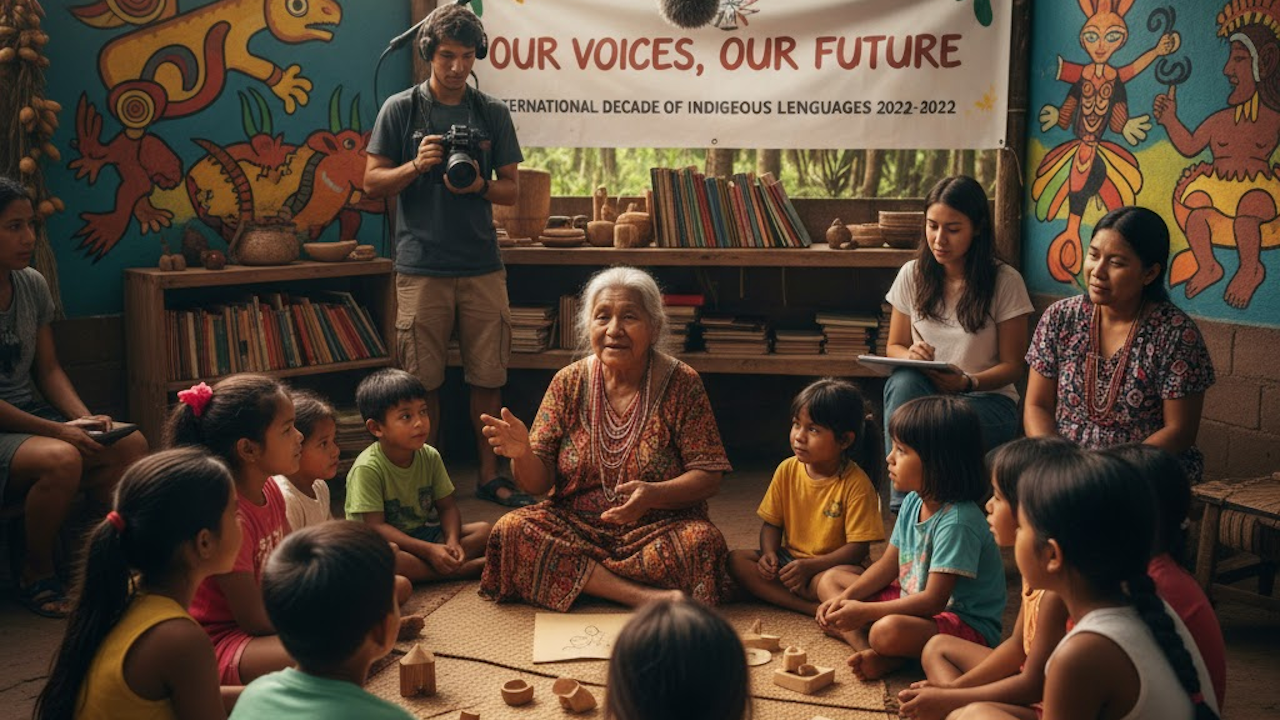Language is the fundamental vehicle of cultural identity, history, and traditional knowledge. It shapes thought, embodies unique worldviews, and provides invaluable insights into human cognition and history. Yet, today, the world faces a crisis of linguistic diversity, with an estimated 40% of the world’s 7,000 languages at risk of extinction within a few generations. This rapid decline is often due to factors like globalization, urbanization, political repression, and a lack of intergenerational transmission. The loss of a language is the irreversible loss of an entire cultural and intellectual heritage, making the preservation of endangered languages a global imperative.
The Profound Value of Linguistic Diversity
The urgency of language preservation stems from the immense value contained within each unique tongue.
Cultural and Identity Connection
For speakers, a native language is intrinsically linked to their cultural heritage and sense of self. It is the language of their ancestors, their traditional stories, songs, ceremonies, and local knowledge. Losing this linguistic link can severely impact a community’s self-esteem, well-being, and connection to their history and land. Preserving a language is therefore crucial for the cultural survival and human rights of its speakers.
Scientific and Intellectual Value
Every language is a distinct cognitive system and a repository of unique human ingenuity. The grammatical structures, vocabulary, and phonetic features of endangered languages contribute crucial data to the field of linguistics, helping researchers understand the boundaries of human language capabilities. Furthermore, indigenous languages often contain local ecological knowledge and traditional practices about the natural world which are invaluable for science and for addressing global challenges like biodiversity loss and climate change.
Key Strategies for Language Preservation
Preservation efforts are multifaceted, encompassing documentation, revitalization, educational initiatives, and the strategic use of modern technology.
Documentation and Digital Archiving
The first essential step in preservation is documentation. This involves a systematic effort by linguists, anthropologists, and community members to create a complete record of a language.
- Comprehensive Recording: Capturing native speakers through high-quality audio and video recordings of natural speech, conversations, songs, and storytelling is vital. This preserves the nuances of pronunciation, intonation, and cultural context.
- Creating Resources: Documenters compile dictionaries, grammars, and textual corpora. These resources are critical for language learners and researchers.
- Digital Archives: Online platforms like the Endangered Languages Archive (ELAR) and the Endangered Languages Project (ELP) provide secure digital storage for these vast collections. Making these resources publicly accessible fosters global awareness and supports local revitalization efforts.
Language Revitalization and Intergenerational Transmission
Documentation alone is insufficient; a language thrives only when it is actively spoken and passed down. Revitalization efforts aim to reverse language shift and increase the number of active speakers.
- Language Nests and Immersion: These highly effective programs place young children in an environment where they are exclusively or primarily taught by elders in the native language. This re establishes the intergenerational link that is often broken. The revitalization of the Hawaiian language is a notable success story largely driven by this model.
- Bilingual Education: Integrating the endangered language into formal school curricula alongside the dominant national language ensures children gain literacy in their heritage language and fosters linguistic pride.
- Community Workshops: Organizing activities like traditional craft making, cooking, and storytelling in the native language provides non academic, culturally relevant contexts for language use.
Technology and the Digital Age
The digital age presents both challenges and unparalleled opportunities for language preservation. While globalization and digital dominance can accelerate language loss, technology offers powerful tools for revival.
Digital Tools for Learning and Use
- Language Learning Apps: Platforms like Duolingo and specialized, community-developed apps are now incorporating courses for lesser known and Indigenous languages, making them accessible to a global audience and younger generations.
- Social Media and Media Production: Community members are leveraging platforms like YouTube, TikTok, and local radio and podcasting to create content in their languages. This promotes visibility, fosters pride, and makes the language relevant in modern daily life.
- Digital Libraries: Creating websites and online repositories for language resources allows speakers in the diaspora or remote areas to connect with their language and culture.
Artificial Intelligence (AI) in Preservation
AI is emerging as a transformative tool, particularly for low resource languages with limited written data.
- Speech Recognition and Transcription: AI models are being developed to automatically transcribe vast amounts of recorded oral data, a task that would take human linguists decades. This significantly accelerates the documentation process.
- Machine Translation and Chatbots: AI-powered tools can facilitate initial translation and act as conversational tutors, providing interactive learning experiences in languages that lack sufficient human teaching materials.
- Ethical Considerations: It is crucial that AI development in this space is community led and undertaken with the full consent and participation of native speakers to ensure linguistic authenticity and cultural fidelity.
Policy, Advocacy, and Global Action
Ultimately, language preservation requires systemic change, political will, and global commitment.
- Official Recognition and Legal Protection: Governments must enact policies that grant minority and Indigenous languages official status and protect their use in public life, media, and education. The United Nations has declared 2022 to 2032 the International Decade of Indigenous Languages, signaling a global commitment to this cause.
- Funding and Partnerships: Sustainable financial support is essential for long term documentation and revitalization projects. This requires funding from governments, non governmental organizations, and private foundations. Collaborative research between linguistic experts and language communities ensures that efforts are culturally appropriate and driven by local needs.
- Community Empowerment: The most successful revitalization efforts are those led by the communities themselves. Empowering native speakers to be the teachers, documenters, and decision makers is vital for the sustainability of their language. They are the true guardians of their linguistic heritage.
Preserving endangered languages is not merely an academic endeavor; it is an act of intellectual conservation and a commitment to human diversity. Every language saved from extinction is a victory for the rich tapestry of human experience.

